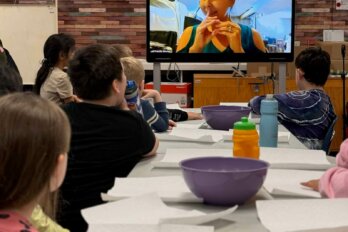Joan Latchford has worked in professional photography since 1952, and was a longtime contributor to the NFB Stills Division. Her photo essay for The Walrus, on on Canadian teenagers in the early 1970s, can be viewed here. Our picture editor, Bree Seeley, spoke to Joan last month.
THE WALRUS: What were you doing in the run up to the 1970s, and why did you choose to document the TransCanada youth movement?
Joan Latchford: I grew up with a mother who took snapshots and pasted them faithfully into large leather albums. I bought my first grown up camera in 1959 or so, together with a secondhand book on how to photograph your children. The book said that while fathers know all about the camera, mothers know all about the children and they should photograph them. I suggested this as an idea for a program on the CBC called Take Thirty and was surprised when they asked me to do it. We were broke, so I asked Kodak if they would provide me with the film. They gave me 35 rolls of 35 mm and asked me if I would shoot some candids for them.
I never did manage to sell anything to Kodak — my first sale was to Chatelaine.
TW: What happened after that?
JL: I was shooting families meeting and greeting out at the airport, and became aware of a man standing waiting to talk to me. It was John Ough of the NFB and he asked me if I had ever sent any photos to the NFB Still photos division. My husband Frank was going to Ottawa the next day so I sent a series I had shot of the first Caribana and sold five. At the NFB still photography division, I was given assignments to shoot “Children of Canada”, both black and white “Middle Class Life”. I got two short-term Canada Council grants and shot “Miles for Millions” marches across Canada.
Michael Semak used to say to me “Joan, you will never be a great photographer until you put photography first.” As a mother of a growing family that ended up at eight children, I replied testily that I considered it more of a challenge to be a great photographer putting it second.
TW: You worked in England for a while, as a teacher.
JL: Yes, in 1958 I spent a year teaching “emotionally disturbed” boys and took a job as a staff trainer at the Robert Simpson Company. Eaton’s and Simpson’s were almost the first stop off the boat for the economic and political refugees flooding in from Europe, mostly young men, often highly educated but lacking the English to land any but average-joe jobs.
Still single and sharing an apartment with a series of long-suffering women, I started a drop-in every Tuesday evening for people to meet, drink coffee and engage in other activities with English-speaking people. It grew to the point that there were 75 people in my apartment the night I met my husband. He proposed to me three weeks later and we continued the clinic ten years. Then, one night nobody came, so we said, “Fine, that’s it.”
However, there was a new breed of political refugees streaming into Toronto — young American draft resisters and deserters in numbers exceeding 25,000 and it did not take long for me to get involved once more, resisters often sleeping like sardines on our living room floor. So for me, transient youths were often mixed up with and influenced by this influx.
As for following it photographically, my camera was something I kept handy at all times and I just photographed anything that interested me pictorially. (Cartier Bresson is my hero and his “Family of Man” exhibit was what really got me started.)
THE WALRUS: What impact do you think the movement had on Canadian society?
JL: Strangely, I think one of the impacts was envy on the part the older generation, who became envious of the sexual freedom enjoyed by the young as result of the security offered by the pill. It was also around this time that the concept of open marriage became popular.
In Toronto, recreational soft drug use became almost mainstream and middle-class, owing partly to the immigration law that prohibited draft resisters from working until they had landed immigrant status. Since this could be a lengthy process a certain amount of dealing provided them with support.
While for many teenagers their transience was the equivalent of today’s “gap year,” it seems to me to have had a darker side than nostalgia for Woodstock might leave one to believe. Many people survived to eminent respectability!




